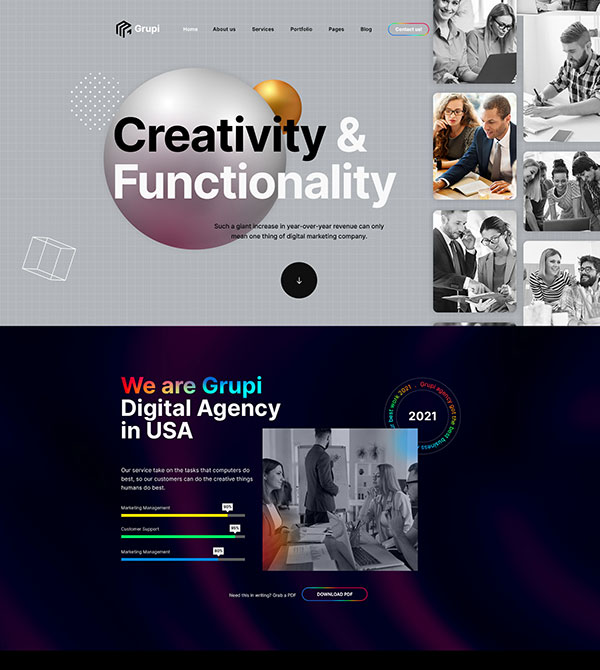1. Introduction to Mythology in Modern Game Design
Mythological stories and symbols have persisted across millennia, shaping cultural identities and inspiring creative expression in various entertainment forms, from literature to cinema. In recent decades, video games have become a dominant medium for storytelling, often drawing on the rich tapestry of mythology to craft immersive worlds. These myth-inspired themes evoke familiarity and evoke emotional responses from players, reinforcing their timeless appeal.
Game designers leverage mythological motifs not only for aesthetic appeal but also to deepen gameplay and narrative complexity. By weaving ancient myths into game mechanics and storylines, developers foster a sense of wonder and cultural connection. For example, titles like LeZeus Official exemplify how mythological themes—such as those centered on Zeus—can serve as a modern illustration of these enduring principles, blending myth with innovative gameplay.
This article explores how mythology influences game design, highlighting educational insights and practical examples that demonstrate its relevance and potential for enriching player experiences.
Table of Contents
- 1. Introduction to Mythology in Modern Game Design
- 2. Fundamental Concepts of Mythology in Game Development
- 3. Mythology as a Narrative Framework in Modern Games
- 4. Educational Value of Mythology in Game Design
- 5. Case Study: Le Zeus — A Modern Illustration of Mythology in Action
- 6. Symbolic Mechanics and Their Cultural Roots
- 7. Interactive Elements Inspired by Mythology
- 8. The Non-Obvious Depths of Mythology in Game Design
- 9. Future Trends: Evolving Mythological Themes in Game Design
- 10. Conclusion: Unlocking the Secrets of Mythology through Game Design
2. Fundamental Concepts of Mythology in Game Development
a. The significance of mythological archetypes and motifs
Archetypes—universal symbols and character types—are foundational in mythology. Carl Jung identified these recurring motifs as part of the collective unconscious, and their presence in games helps create relatable and compelling characters and narratives. For example, the hero’s journey, a common archetype, structures many myth-inspired stories, guiding players through quests that mirror mythic quests for knowledge, power, or salvation.
b. Common mythological symbols and their meanings in game narratives
Symbols like the thunderbolt, the serpent, or the sacred tree carry layered meanings that resonate across cultures. In game design, these symbols serve as visual cues or mechanics that reinforce thematic depth. The thunderbolt, for example, often signifies divine power and authority, and as seen in the game mechanics of LeZeus Official, it can be integrated as a weapon or special ability, connecting gameplay with mythological significance.
c. The role of myth-inspired mechanics in enhancing gameplay depth
Incorporating myth-inspired mechanics—such as divine interventions or mystical puzzles—adds layers of complexity and engagement. These mechanics often mirror mythological themes, encouraging players to explore symbolic meanings while navigating challenges. For instance, a mechanic that requires invoking a deity’s power can evoke cultural narratives and enhance emotional investment.
3. Mythology as a Narrative Framework in Modern Games
a. Structuring stories around mythological quests and characters
Many contemporary games adopt mythological quests—epic journeys involving gods, monsters, and legendary heroes—as the backbone of their narratives. This structure provides a familiar yet flexible framework for storytelling, allowing developers to craft engaging plots rooted in cultural myths. For example, a game might follow a hero’s quest to retrieve a divine artifact, echoing stories like the Argonauts or King Midas.
b. Examples of mythological storytelling—traditional vs. modern adaptations
Traditional myth retellings focus on preserving cultural authenticity, while modern adaptations often reinterpret stories to fit contemporary themes or gameplay mechanics. Titles like LeZeus showcase how Greek mythology, especially the figure of Zeus, can be reimagined in a way that appeals to today’s players, blending ancient stories with innovative mechanics.
c. How mythological context influences player engagement and emotional investment
Mythological settings evoke deep cultural reservoirs, fostering emotional connections. Players often feel a sense of wonder and curiosity when encountering myth-inspired elements, which can heighten immersion and investment. Integrating well-known symbols or stories makes the game world feel richer and more meaningful.
4. Educational Value of Mythology in Game Design
a. Teaching cultural literacy through myth-based content
Games serve as accessible platforms for introducing players to diverse mythologies, fostering cultural literacy. When players encounter symbols like Zeus’s thunderbolt, they may become curious about their origins, prompting further exploration of Greek mythology and its influence on Western culture.
b. Balancing accuracy and creative reinterpretation in game narratives
While creative freedom allows developers to adapt myths for gameplay purposes, maintaining core elements ensures cultural respect and educational value. For example, accurately representing Zeus’s attributes—like his association with lightning—can enhance both authenticity and player understanding.
c. The potential for games to serve as educational tools for mythology awareness
Educational game design can incorporate mythological knowledge through interactive storytelling, quizzes, or lore discovery features. Such approaches foster curiosity and help players grasp complex cultural concepts in engaging ways.
5. Case Study: Le Zeus — A Modern Illustration of Mythology in Action
a. The thematic integration of Greek mythology, focusing on Zeus
LeZeus exemplifies how Greek mythology can be seamlessly integrated into modern game mechanics. The game’s theme revolves around Zeus, the king of gods, whose mythological stories underpin its narrative and design elements. This thematic focus creates a cohesive experience rooted in ancient Greek culture.
b. Symbolism: Zeus’s thunderbolt as a key mechanic—origin and significance
In Greek mythology, Zeus’s thunderbolt symbolizes divine authority and power. In LeZeus, this symbol is transformed into a gameplay mechanic—triggering special features or bonus rounds. This integration not only enhances gameplay but also educates players about the significance of the thunderbolt as a divine weapon, reinforcing its cultural roots.
c. How Le Zeus exemplifies mythological storytelling through gameplay mechanics
The game’s mechanics—such as the Mystery Meter and bonus spins—serve as metaphors for uncovering divine secrets, echoing mythological themes of divine intervention and revelation. These features deepen narrative immersion and demonstrate how myth can be embedded within gameplay structure.
6. Symbolic Mechanics and Their Cultural Roots
a. The use of mythological symbols (e.g., thunderbolt) as game mechanics—educational implications
Incorporating symbols like the thunderbolt into game mechanics provides dual benefits: enriching gameplay and serving as educational tools. When players activate a thunderbolt mechanic, they learn about Greek gods’ attributes, fostering cultural literacy through interactive experience.
b. Clarifying misconceptions: Irish folklore symbols like the four-leaf clover in myth-inspired games
It is important to differentiate between symbols rooted in specific cultures. For instance, the four-leaf clover is associated with Irish folklore and luck, but it is less prominent in Greek mythology. Accurate representation ensures cultural respect and educational integrity.
c. Connecting symbols to player experience and cultural literacy
Using culturally significant symbols as gameplay elements can deepen player understanding of their origins. When players recognize Zeus’s thunderbolt as a symbol of divine authority, it enhances both engagement and knowledge.
7. Interactive Elements Inspired by Mythology
a. The role of bonus features like the Mystery Meter in enhancing narrative depth
Features like the Mystery Meter in games such as LeZeus serve as narrative devices that mimic mythological revelations. Filling the meter symbolizes unlocking divine secrets, adding layers of anticipation and storytelling depth.
b. How filling the Mystery Meter in Le Zeus offers additional spins and full grid potential—metaphor for unlocking secrets of mythology
This mechanic acts as a metaphor for uncovering hidden divine knowledge, aligning gameplay with mythological themes. It encourages players to explore and engage with the game’s narrative, reinforcing the educational aspect.
c. Designing game features that reflect mythological themes to deepen engagement
Integrating features like divine interventions, mythologically inspired puzzles, or symbolic mechanics enhances immersion and educational value. These elements make mythology a living part of gameplay, fostering curiosity and learning.
8. The Non-Obvious Depths of Mythology in Game Design
a. The influence of lesser-known mythological stories and characters on game content
While iconic figures like Zeus are prominent, many games incorporate lesser-known myths—such as the myth of Orpheus or the Trojan War—to enrich narrative complexity. These stories provide fresh perspectives and educational opportunities about diverse mythologies.
b. Exploring mythological symbolism beyond the obvious—hidden layers and their educational impact
Symbols like the labyrinth or the phoenix carry layered meanings that can be subtly integrated into gameplay, encouraging players to discover and interpret these hidden messages, thereby deepening their cultural understanding.
c. The importance of cultural sensitivity and accuracy in myth-inspired game elements
Respectful and accurate representations of myths prevent cultural misappropriation and promote educational integrity. Developers should research thoroughly to portray mythological elements authentically, fostering respect and learning.
9. Future Trends: Evolving Mythological Themes in Game Design
a. Emerging technologies (AR/VR) and their potential to deepen mythological storytelling
Augmented Reality and Virtual Reality open new horizons for immersive mythological experiences, allowing players to explore ancient worlds and interact with gods and monsters firsthand. This technological evolution enhances educational immersion and engagement.
b. The rise of cross-cultural mythological mashups and their educational significance
Blending myths from different cultures—such as Greek and Norse—can foster cross-cultural understanding. Thoughtful mashups can serve as educational tools that highlight similarities and differences among world mythologies, enriching players’ cultural literacy.
c. Leveraging mythological complexity to create more meaningful and immersive gameplay experiences
As mythologies grow more intricate, game designers can craft narratives that explore nuanced themes like morality, fate, and divine justice, making gameplay more thought-provoking and culturally rich.
10. Conclusion: Unlocking the Secrets of Mythology through Game Design
Mythology offers a profound source of inspiration for modern game development, providing both educational value and entertainment. When thoughtfully integrated, myth-inspired elements can deepen player engagement, promote cultural literacy, and preserve ancient stories in a digital age.
“Great game design balances mythological authenticity with innovative mechanics, creating worlds where players not only play but also learn and appreciate the richness of human culture.”
As technology advances and cross-cultural narratives flourish, the potential for myth-inspired games to serve as educational tools and immersive experiences continues to grow. Exploring these connections ensures that the ancient stories of gods, heroes, and monsters remain alive and relevant for future generations.









